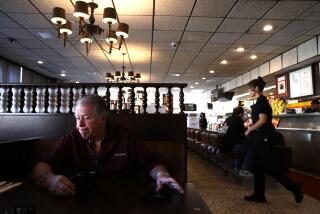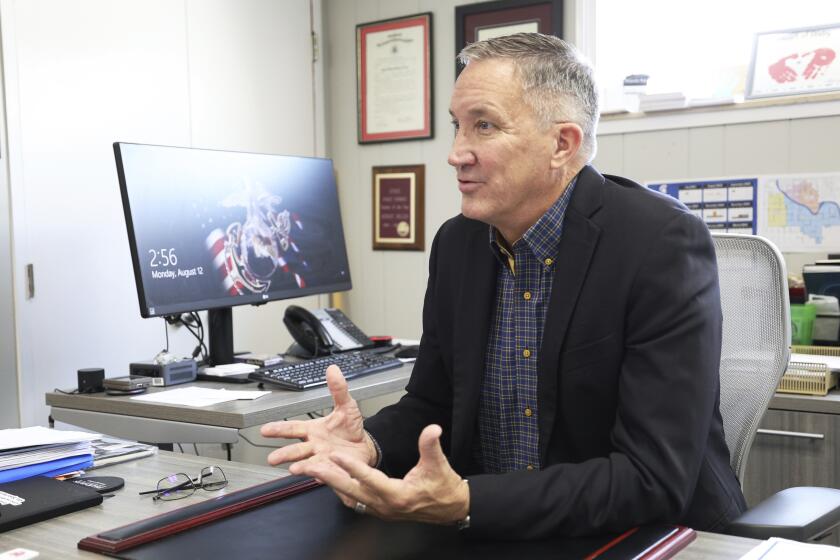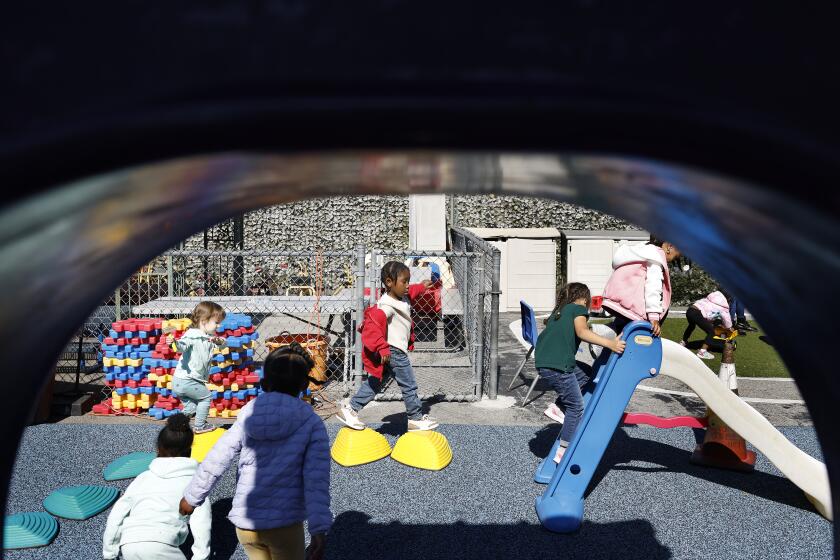PTA’s Currents Affair : Parents of Buena Terra School students raise money to bring a mobile tide-pool exhibit to the campus.
Eight-year-old Christina Engrasci drenched her hands inside the tank of salt water Tuesday and touched a giant chiton, an ocean creature that looks like a big snail without a shell.
“It’s slimy!” the Buena Terra School second-grader squealed as her classmates echoed similar excitement over the sea urchins, sea stars--no longer called starfish--king crabs, baby sharks, and the giant slugs before them.
But there was a somber financial reality about this school field trip.
In this era of budget crises for school districts, funding for extra programs like visits to tide pools and museums are no longer a frill many districts can afford.
So, schools are finding ways to bring the field trips to campus.
Thanks to Buena Terra’s PTA, which raised $1,110 for the experience, the school’s 575 students were exposed to the marine environment Monday and Tuesday.
“It’s costly, but it’s worth it,” said PTA president Karen Peterson. “We know it’s hard with the way (school) budgets are, and we know our kids aren’t going to have these opportunities unless groups like the PTA work to bring them to school.”
Peterson said many of the school’s students never have had the opportunity to go to the ocean and poke in the tide pools.
“Some kids have never seen a sea urchin or a shark,” she said. “They study about them in a book, but it’s not the same as seeing it living right in front of you.”
The Living Science Foundation of Brea, a nonprofit organization that promotes the study of science by introducing children to living animals, brought the eye-opening selection of ocean life to the school.
“The benefit is we can bring a tide pool experience, a hands-on activity to children,” said Buena Terra Principal Doug DeVore, who noted that with the high cost of field trips, “we could never take all these children to the tide pools.”
DeVore said that since the school can’t afford extracurricular activities, it depends on the PTA to sponsor these types of programs. The school’s field trip budget is about $4,000 a school year, which is funded by the parent-teacher organization, DeVore said.
“One of the major benefits of (field trips) is it extends their learning and it shows them the real-life application of what they learn in the classroom and how it applies to the outside world,” DeVore said. “It’s a motivator, and it contributes to exciting learning.”
Timothy A. Plagge, Living Science Foundation marine science educator, said that because there’s been a diminishing interest in the sciences among students in lower grades, the foundation’s mission is to enhance the children’s science studies.
“This is designed to let kids know it’s not a boring subject,” Plagge said. “We’re trying to whet their appetites for science in general.”
Plagge said the foundation also offers living science programs that involves macaws, pythons, frogs, chinchillas, tortoises and other live animals.
The Living Science Foundation was founded in 1978 in Michigan, he said. In 1990, the program was expanded to California with an office in Woodside, south of San Francisco. Last month, an office was opened in Orange County.
Plagge said that in Southern California alone last year, the foundation conducted the program at 65 schools and estimates that it will conduct programs in more than 100 schools this year.
“It’s catching on,” he said.
Craig Rawson, 8, smoothed his hands over a small shark, a definite crowd-pleaser, as it bobbed its head out of the water as if to greet the children.
“I wish I had one of those sharks,” Craig said afterward, excitedly adding that the shark licked his finger.
As children rolled up their sleeves and dunked their hands inside two, 100-gallon portable saltwater tanks, their eyes lit up as they explored the natural wonders of the sea.
Touching and holding, students squirmed and screamed, oohed and aahed as they felt long spider-like legs of the spiny king crab or the leather sea star that was smooth and silky like a wet leather raincoat.
“There’s powerful learning going on,” Principal DeVore said. “It’s a very, very valuable experience.”
And most of all, DeVore said, “they love it.”
More to Read
Sign up for Essential California
The most important California stories and recommendations in your inbox every morning.
You may occasionally receive promotional content from the Los Angeles Times.






